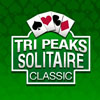Deeply Rooted
Are You Zoned Out?!
Now that the snow has come and it feels like winter, we might as well talk about winter hardiness. We are often asked if we sell plants that are not comfortable with our lower temperatures. A lot of people don’t recognize that plants are like people – a lot of varying temperament. One of the most temperamental things a plant has to deal with is minimum temperature. You may have noticed that there aren’t palm trees growing here, or lemons, or even peaches.
We have plants that are solid and rarely have any challenges with cold. Examples would include all of the native plants. This is because they have been climatized here for centuries. This could include Green Ash, Manitoba (Boxelder) Maple, potentilla, saskatoons and many others. There are other plants brought from other regions in the world that are also very hardy like caraganas, Amur Maple, Manchurian Ash and most lilacs. Then we have a list of plants that would either be hybrid with hardy native plants but may have come from milder climates. The challenge is to get the hardiness from one plant and the beauty or special feature from the other. This would be the case with our roses, apples, plums, and grapes. These plants are often hardy but can have a slightly reduced hardiness due to the weaker parent. Lastly, there would be introduced plants that come from a slightly milder climates but can tolerate our climate provided they get some winter wind protection like other trees blocking north and west winds, fences, or even being planted on the south or east side of a building. Plants included in this list would be hydrangeas, Sugar Maple, apricots, Black Walnuts, some spirea, and tender clematis.
There is a national standardized system to indicate which plants can grow in which climatic areas called “zones”. There is a hardiness zone map accessible by internet, but the challenge is getting that into an exact science. The factors inputted would be primarily winter minimum temperature, duration of minimum temperatures, length of frost free season, heat units during the summer, and even wind chill factor. Two more variables would be the amount of moisture (and when it comes), and lastly the flexibility of each winter. If I was to give you a standard number, for our major catch basin it would be zoned 3a for the area of southern Winnipeg, for Rosenort to La Broquerie, as well as Vita to Oak Bank. If you’re living in the Winkler, Morden, Altona area it would be Zone 3b. If you’re located in the Interlake area, it would be Zone 2b. The lower the number, the colder the climate rating for that area with the letters included adding further distinction. So in simple terms a 2b area is colder than 3a which is colder than 3b.
We like using this system, but we need to fine tune it even more than what’s given on a map. For example, if you live in the city and there’s lots of fences and homes around, there is a macro climate that is influencing the temperatures and wind velocities. This would bring a city lot that has protection like this into a Zone 3b. On the flip side, if you’re in a new development facing north winds and can see 3 miles into the farmer’s field, you will be in zone 2b even though your zone map says 3a. Even sheltered farm yards can be a Zone 3b in a 3a zoned area. We use the zone map but we also like to add a practical element to it, making it slightly easier to identify your area. So, we have come up with the following system:
We have labeled zone 2b as exposed: where you can plant anywhere outside and you’re good. Just cooler than the 3b or 3a area that is very open to north and west winds. The next designation we have is sheltered. This could be a Zone 3a area that is not exposed to severe winds but isn’t cozy from all wind velocities. This segues into the last term we use which is cozy. This is a space offering considerable wind protection. It is a corner that could be facing a southeast exposure. For example, a garage on the north west side of the house which provides major winter wind protection. Usually living rooms are on the west of this area. It also helps if they’re in a mature neighborhood and have fences. This would be considered 3b. 3b would also be considered an area that is very sheltered by trees all around. Like a little cutout in the woods. These would be good spots for Autumn Blaze Maples, Black Walnuts, Butternuts and Honey Locusts. Some of the varieties that require that extra sheltered area.
When you visit the nursery, look for these designations to help you find what works for you. If you’re still a little fuzzy or uncertain, please talk to one of our staff. We want to ensure that your trees will grow no matter which zone you’re coming from!




